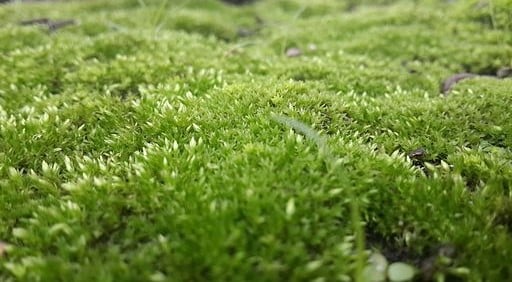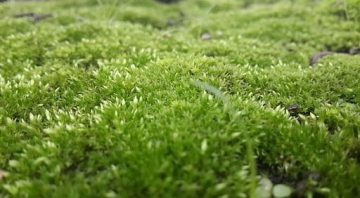November 1 is the deadline for the annual Exponent II essay contest. We are so excited to read your submissions and publish the essays in the Winter 2017 issue of Exponent II. The winner of the contest will receive a week’s stay at a writer’s retreat in Ireland. The following is an example of an essay on the contest theme: This I Believe. Submissions should be 1300 words or less and can be sent to exponentiihttps://exponentii.org/wp-content/uploads/2021/12/IMG_5173-scaled-1.jpg AT gmail DOT com.
Three or four years ago, I started on a journey of my testimony of moss. It began at the Exponent retreat, as I listened to a moss prophetess in her holy space. Kirsten Ward co-wrote a field guide for North American mosses and is a leading scholar on the subject. She took a group of us on a walk through the woods. Kirsten’s enthusiasm for moss is infectious and very quickly we were spread out, kneeling on the leaf-strewn ground and gingerly moving plants and rocks in order to see the moss better. We used a hand lens that made the texture and complexity of moss suddenly apparent to our eyes. We learned about different species, observed various stages of reproduction, and listened to a history of moss that dates back almost 500 million years. I returned home with my brain dwelling on moss, a plant I had never before pondered.
I have always believed in the importance of raising children outdoors. At the time of the first moss walk I was living with my husband and young daughter in inner-city Baltimore and we rarely made the trek outside the city for a real hike. But on our walks through the city we could observe moss every day. My daughter and I would crouch down next to buildings or rocks in the park, reveling in our ability to apply our spare knowledge of this extraordinary plant to the subject in front of us. All through that winter and spring, my daughter’s voice would frequently chirp up with, “Look, Mom! MOSS!” When we did manage to go on a real hike, she was frequently reinvigorated to continue walking with a sighting of moss along the path.
Last year my family—now with three children in tow—moved to a new state and bought a house in the woods. Finding nature is easier and more obvious now, although I do not believe that finding moss in the woods is that different from finding moss in the cracks of sidewalks. The trees are so dense in our neighborhood that growing grass is quite difficult and many people have moss lawns. The green is vibrant year-round and a mixture of species creates incredible richness of color and texture. Sometimes when I’m desperate to get the kids outside and busy for fifteen minutes, I’ll ask them to find me five different kinds of mosses and then have them organized by color or shape. For Christmas this year I plan to give my daughter a moss field guide and her own hand lens so that she can continue growing the interest in moss that was planted on the streets of Baltimore.
I believe that moss is not just an odd, esoteric interest for my family. When people spend time outside, they develop a sense of something bigger than themselves. I believe that the natural world is a holy space, perfectly designed for us to embark on spiritual and philosophical internal dialogues that nudge us toward increased humility and better perspective. Outside I learn to be still, to listen, and to return to my world knowing that I am not the center of it. The times I spend sitting quietly and observing an insect are, for me, some of the most soul-filling and worshipful experiences I have. Call it what you like—Mother Nature, divinity, the awesomeness of biology—but I find God in moss, leaves, and bugs in a way that is very similar to what I’ve found in any religion.
I hope that my kids choose to stay in the LDS church. It is my home, my native language, and I hope they feel the same way. If not, I hope that they have some kind of relationship with God. That’s why I make them go outside every day. That’s why we crouch down and observe the moss. Because if they ever decide that religion is not for them—and they very well might—I want them to at least have a sense of the divine, a sense that there is something bigger and lovelier than anything we can imagine with our narrow scope and understanding. Finding a sense of awe doesn’t have to be limited to incredible vistas or peaked cathedrals, although I feel it in those places as well. Moss leaves are just one cell thick. I can’t think of another plant that is so ubiquitous, so tiny, so lacking in receipt of comment or attention. Yet I believe in finding God in the moss.
For more examples and inspiration, check out some of our favorite examples of This I Believe essays:





7 Responses
This is lovely, simply lovely
I love picturing you and the kids going around looking for moss. So great!
I love this. I love the idea of spending time outside on a daily basis. I agree, heaven is found there.
Since last Exponent retreat where I learned a little about the moss, I take my young children on walks where they have learned to identify it and say ‘MOSS’ with a lot of excitement. I will definitely get the guide and hopefully, help everyone become a more knowledgeable about what surrounds us in nature.
This is lovely. Thank you for this.
I would love to see a whole sacrament meeting on this topic. Thank you.
I also had the privilege of learning about mosses from Kirsten at this year’s Exponent II retreat. I was amazed by how resilient, ancient, and diverse they are, considering their size, kind of like us.